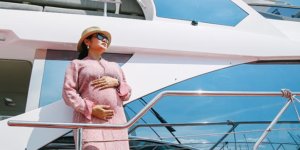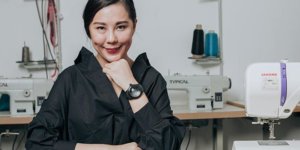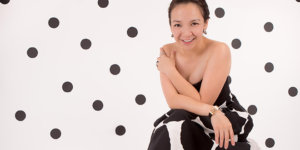Calligraphy Artist and Illustrator Lihua Wong Draws Her Way Into the Fashion Industry
For International Women’s Day, we celebrate just a few of the many Malaysian women who are in careers of passion, rather than tradition. Kedah-born Wong Lihua, calligraphy artist and fashion illustrator, talks about her success so far and why she plans to remain in the fashion business.
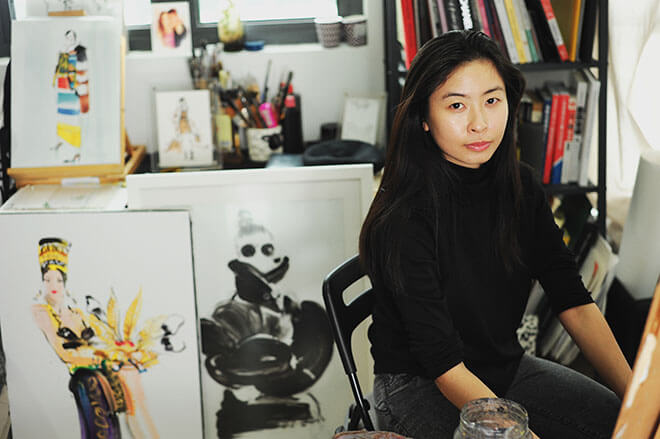
Fashion illustrator and calligraphy artist Wong Lihua. Photos by Shahrul Nizam Basri.
Lihua Wong is a unique artist in a world dominated by Photoshop-manipulating designers. While she may argue that both professions belong in different fields of varying practicality, her published works has put her in a league of her own when compared to her contemporaries in Malaysia.
Fascinated with women’s curves, the 28-year-old fashion illustrator merges Chinese calligraphy with digital techniques to translate the graceful features and gestures of the female form on paper. Aside from using traditional Chinese ink, her works also feature watercolour that add interesting dimension to her sketches.
This distinct style may have taken her to work with fashion brands in Singapore, Thailand, United Kingdom and the United States since 2016. But it’s her deep sense of self-awareness and thirst for improvement will spring her to greater heights in the fashion industry.
Born in Kedah in 1990, the self-professed fan of Chanel and Dior believes that there’s only one way to carry an artist’s craft to the next level. And that’s through persistent assessment of one’s own body of work. It’s a never-ending learning process that she reveals, in an interview with Luxuo, she still undergoes long after her graduation at Birmingham City University in 2015.
Calligraphy-based art has put your style in the radar of fashion brands here and abroad. Can you tell us how it all began?
Wong Lihua: I learned a lot about Chinese calligraphy when I was 5 or 6 years old. My whole family was learning it together, and we all developed a habit of applying it in writing.
At first, I didn’t like [calligraphy] because I was quite young and my parents forced me into it. It was only when I was growing up that I began to appreciate it. I like the strokes and how they seem to go with the flow.
Did incorporating calligraphy into your artworks come naturally, or was it a conscious effort on your part?
WL: It was quite related to my line of work. After college, I taught painting for five years. I would usually take a break from all the traditional paintings I had to finish for my class. I would sit down and try to draw other stuff.
I remember having Chinese ink on my table and I used it with a flat brush on an A4 paper. When I finished drawing, it occurred to me that it was something that I was looking for. It looks easy and effortless even though it takes time and effort to complete. It matches my style, and that really helped when it comes to creating my own signature.
It also makes my artworks more intriguing, helping it stand out because fewer people are using the element of Chinese calligraphy in Malaysia. So, I try to fit it in my art because it makes me more unique as an artist.
Is calligraphy always going to be a key element in your illustration style?
WL: Yes. I apply it into whatever I’m working on right now. But the way I apply it gradually changes as I change my goals. I can’t say that I have a fixed one. You can actually see my style evolving from black and white to using water colour. I always look for the best tools to see how they respond to the paper and other surfaces. I always test new ways to see how it looks like and find out if it matches with my current mood.
Social media seems to have contributed a lot to your popularity in the local fashion scene. How important has it been to your career?
WL: I used to share my works on Facebook until its ads policies made it harder to manage. Then, I moved to Instagram. They’re important because I engage with a lot of clients through [Instagram]. That’s how people got to know me. It also helped me build my digital network, which I need, in order to gain an international following.
Brands like Gardens Mall as well as Hugo Boss and Dior both from Malaysia and Singapore contacted me through Instagram. The first big one to approach me was Chanel around 2016. It happened so fast.
That must be thrilling.
WL: But the first jobs I got weren’t really related to fashion. They engaged me because I can draw people in just a few moments. It’s something they could use as a form of entertainment or activity in their media events.
There are also some who want to use my art to promote their brands in Europe and the US, which I hope focus more in the future. It’s more fashion-related. Some of them would send me their outfits. And because they cannot draw it, they need my ink to interpret in a more artistic way.
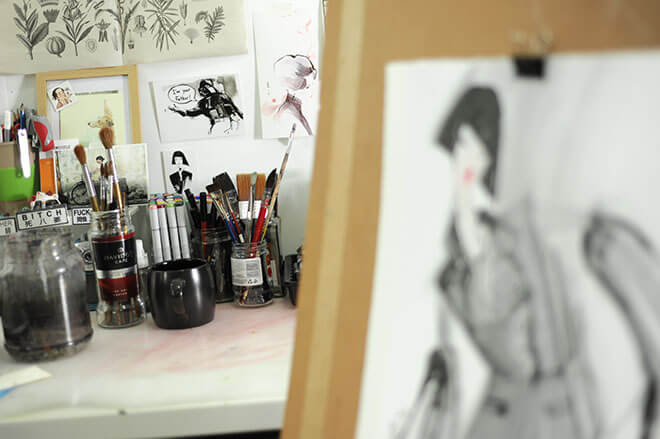
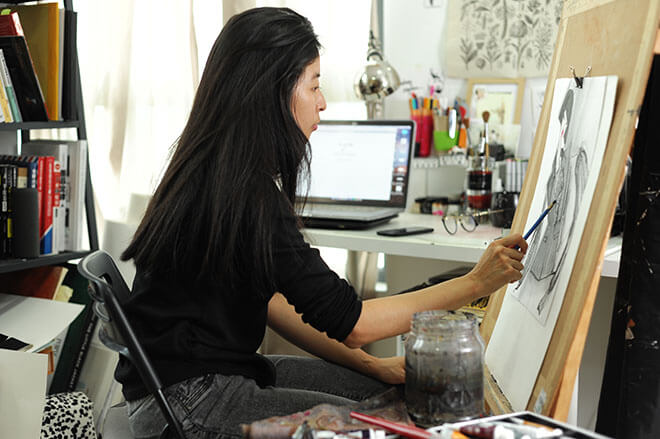
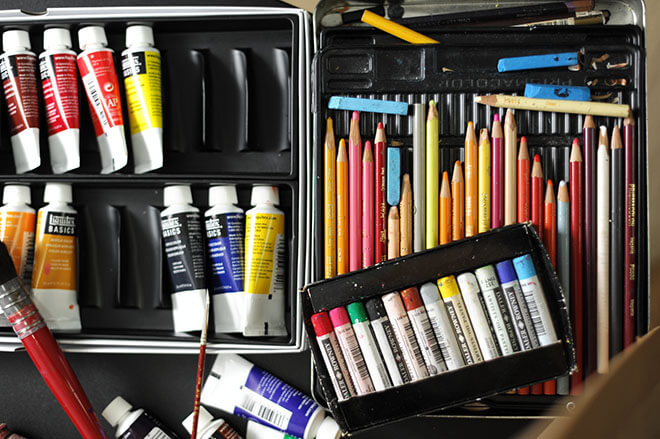
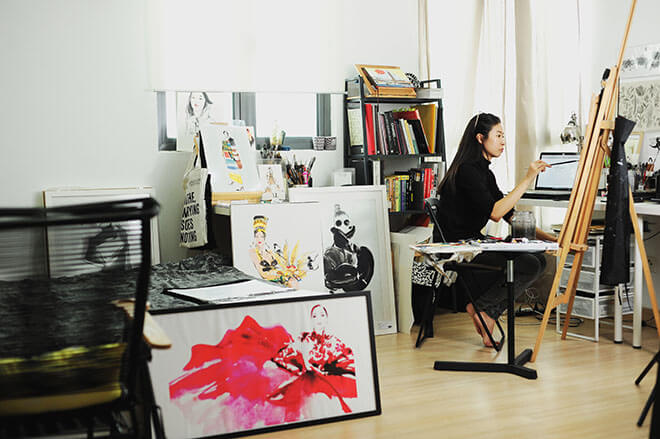
What is your advice for artists who are in the process of learning how to become more business savvy?
WL: When it comes to creating a business, artists need to think not only about what they want to market, but also why a client would want to hire you. Understand what is currently in demand, but also identify how viable it is for you as an artist to fill that demand.
What was your strategy for making a name in the fashion industry?
WL: I used to accept every job that’s offered to me because I felt that I need to try out everything when I was younger. I needed to understand what I was good at. But now, I feel like I already know my strengths and the direction I want to go. So, it makes more sense for me to be more picky in the collaborations I want to be a part of.
How do you stay focused in the course of achieving your career goals?
WL: You must understand the direction you want to go.
You must also know how to ensure your growth if you follow that path. My goal was to work with fashion brands. So, I went to the right industry and tapped the right clients before I slowly expanded my network.
Where do you get your inspirations from?
WL: I always look for fashion shows and just watch them on Youtube every morning. I just let the clips play or I just look at online magazines. I don’t read through them but I look at pictures a lot. If I get stuck, I’ll go out and look for a masterpiece outside fashion. And when I travel, I go to art galleries or museums to look at paintings and study other people’s works, of course. I can spend my whole day there.
Where do you see yourself in the next two years?
WL: I’m still hoping that I can work with more fashion brands. I would like to have one of their outfits to be produced using my signature illustrations. To do that, I need to cement myself in this path to go that way and see where I end up.
Will we see you delving into other areas of art, like textile or even fashion designing?
WL: Seeing my designs on textile is a part of it. Let’s see how it pans out. If not, I want do more in ad campaigns. But I don’t think I will end up as a fashion designer. I’m not into crafts, and I’m not good in sewing.
What’s your advice on young artists who aspire to etch a name for themselves?
WL: Always look back and study your body of work. Look for ways to improve them. Don’t be afraid to play with different techniques because you will need to master them before you can take it to the next level.
See more of Lihua’s work on her Instagram account.




